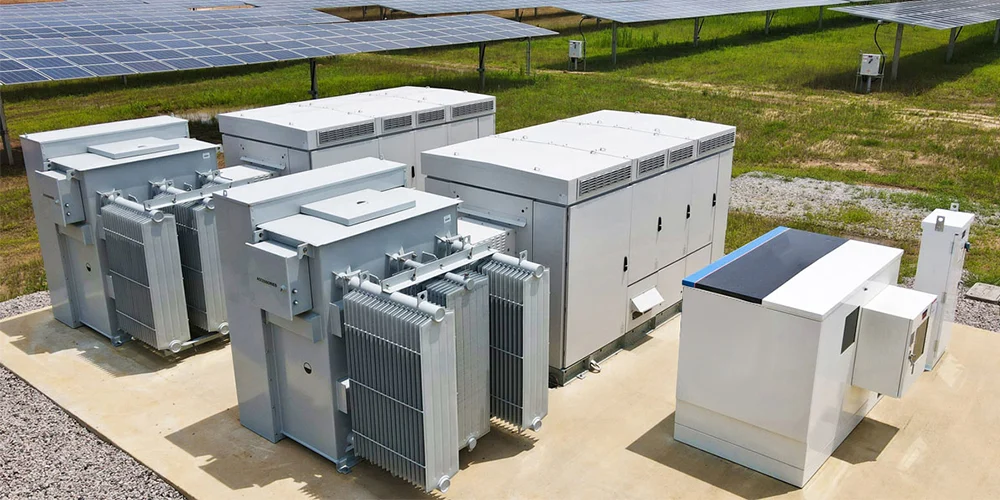As the planet hurtles towards carbon neutrality at an ever-more-frantic rate, the energy storage sector is heating up—and there’s a new star shining brightly: sodium-ion batteries. Renowned for their safety, affordability, and abundant raw materials, sodium batteries are finally making big news with breakthroughs in performance and commercialization. From heavy-duty vehicles to grid-scale storage, they’re set to be a game-changer in the next generation of green technologies.
Breakthroughs Are Coming Fast—and They’re Big
CATL recently unveiled its new sodium-ion battery brand “AB,” along with its first commercial product—a 24V battery system designed for heavy-duty trucks, expected to hit the market by the end of the year. The battery boasts an energy density of 175Wh/kg and operates smoothly in temperatures ranging from -40°C to 70°C. Even under extreme tests—nail penetration, drilling, or even cutting—it doesn’t catch fire or explode.
BYD, another battery powerhouse, has also made major progress. Their sodium-ion cells now offer 200Ah capacity and over 10,000 charge-discharge cycles, with strong performance across high and low temperatures. Meanwhile, China-based HiNa Battery debuted a sodium-ion solution for commercial vehicles that charges fully in just 20–25 minutes while delivering more than 8,000 cycles—even under fast-charging conditions.
Simply put, sodium-ion batteries have gone from lab experiments to real-world performers.
Affordable, Abundant, and Safe—Perfect for the Energy Transition
Unlike lithium, sodium is cheap and abundant. That positions sodium-ion batteries less vulnerable to raw material price volatility and supply chain disruptions—a huge edge in today’s geopolitical landscape.
They are cheaper to manufacture. To produce them at the moment takes around ¥0.5/Wh, and with more mass production, that may drop down to ¥0.3/Wh—a 30% reduction from lithium batteries.
Another gigantic selling feature? Cold-weather operation. Sodium-ion batteries retain over 90% capacity at -20°C, while lithium batteries will lose less than 70%. That makes them a very compelling option for cold climates and winter-dominant use.
Storage + Transport: Two Markets Ripe for Disruption
Sodium-ion tech is especially promising for commercial and industrial (C&I) energy storage. It’s perfectly positioned for grid balancing, backup power, and smoothing of renewable energy—spreading cost savings, safety, and reliability.
It’s also gaining pace in transportation. Some auto manufacturers like CRRC, JAC, and Yutong have already partnered with HiNa Battery for commercial vehicles with sodium power. Top EV manufacturers like Yadea have already released electric two-wheelers using sodium batteries targeted for short-range urban consumers.
Taking advantage of fast charging, high cycle life, and high safety, sodium-ion is ideal for delivery vehicles, low-speed electric cars, city buses, and utility vehicles.
Industry Players Are All In
With demand escalating and clear policy support, the value chain for sodium batteries is quickly falling into place. Corporates like E-Star, Tongxing Tech, and Haisida (part of PuriTech) have stepped up investments in materials, battery cells, and energy storage solutions.
Sodium-ion battery shipments will exceed 100GWh in the next 3-5 years, the whole market size of which will exceed the ¥100 billion mark, according to the China Energy Storage Alliance. And C&I energy storage and commercial transport will be the first two markets to take off.
Final Thoughts: The Time to Act Is Now
Sodium-ion batteries are no longer a pipe dream. They’re becoming a real, viable option for energy transport and storage—especially in those places where safety, cost, and cold-climate functionality matter most.
With the right combination of scale, technology, and policy support, this new battery technology can now match lithium iron phosphate (LFP) in scale applications.
For visionary energy firms, investing in sodium-ion today is like entering the lithium space 10 years ago. The runway is long, the opportunity is huge—and the future is electric.
At [Your Company Name], we’re ready to lead this change and partner with pioneers across industries. Let’s build a smarter, greener future—together.

